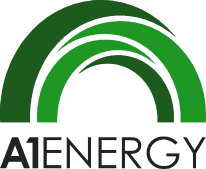
Does your company have an overall energy plan, and if so, how well are you following it? Your company spends thousands, if not millions, of dollars on electricity costs every year. But to view this as an expense that can only be managed is a missed opportunity. These easy energy tips for commercial buildings will help you make strategic choices about how much energy your property consumes.
1) Identify Your Energy Hogs
A utility bill only tells you what your total energy consumption is, not which area uses the most kilowatts. When you know which system is your largest energy hog, you can implement retrofits or operational changes that lower costs. Depending on your building type, there are several methods that will help you calculate which equipment requires the most electricity.
If you run a warehouse facility, this will likely be your lighting system. A simple audit of the existing light fixtures to determine the energy consumption values will give you great insights. A lighting audit will survey all existing fixture/lamp types, existing kWh usage from the lighting, propose recommended retrofit fixtures/lamps with costs and calculated savings.
Do you manage a large commercial building? If so, the HVAC system is mostly likely the greatest energy consumer, followed by lighting and plug loads. An Energy Star Benchmarking audit/report will provide you with building and portfolio data. This report also compares your facility to similar facilities.
For manufacturing facilities, an ASHRAE audit may be the best analytical method. Data loggers and submeters will dive into even greater energy detail to flag your biggest energy users. Once the largest energy users are identified, an actionable plan can be created.
2) Understand Utility Costs
It is important to understand how much you are paying for the utilities. It’s common for a facilities team to handle energy projects while a CFO or purchasing department will oversee energy procurement. But there’s more to energy procurement than knowing the current rate and the term length of the contract.
It is critical to understand how the property uses energy when shopping for ideal market conditions. For example: is the load all on-peak, or a combination of on and off peak, do you have the ability to shed load at peak times? You also need to understand how proposed energy efficiency projects will affect the load profile.
3) Look at the Entire Financial Picture
You should also examine the entire financial impact of an energy retrofit. There may be federal and state tax incentives available for energy savings projects as well as local utility rebate programs. There may be sales tax exemptions available on the utility costs that can help offset the costs of energy projects. Be sure to investigate the availability of energy project financing mechanisms if upfront investment costs are a concern.
